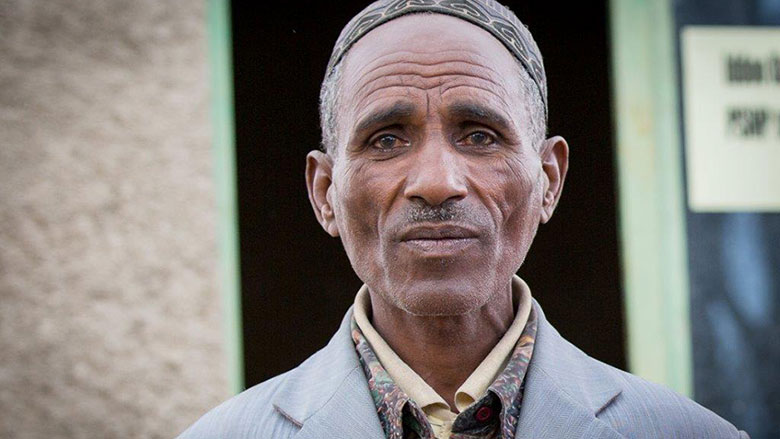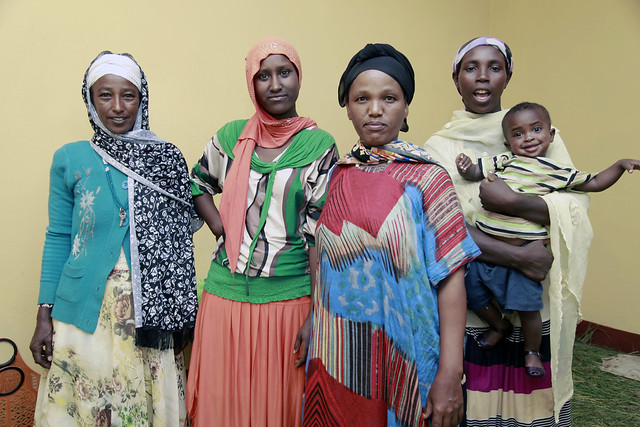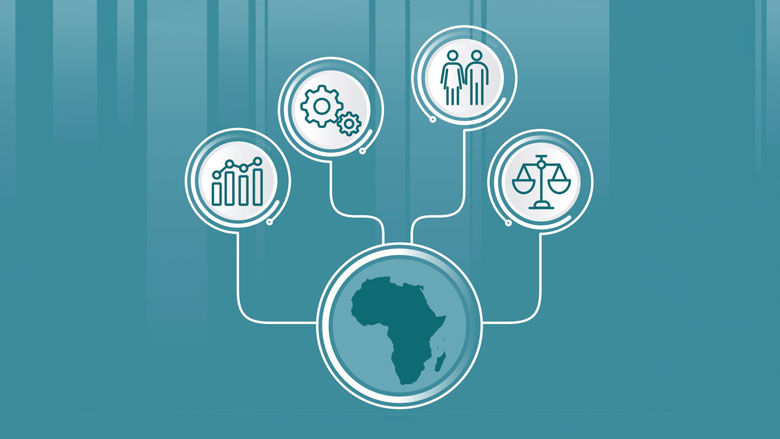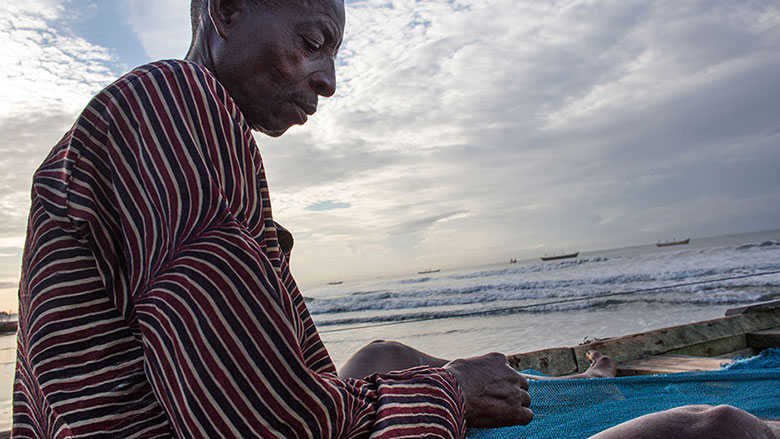With about 126.5 million people (2023), Ethiopia is the second most populous nation in Africa after Nigeria, and one of the fastest-growing economies in the region, with an estimated 7.2% growth in FY2022/23. However, it also remains one of the poorest, with a per capita gross national income of $1,020. Ethiopia aims to reach lower-middle-income status by 2025.
Ethiopia’s strong growth record has been reflected in average real growth of nearly 10% per year between 2004-18, one of the highest rates in the world, led mainly by infrastructure investments that expanded access to infrastructure, services, and supported better living standards. Notable outcomes include expanding nearby potable water access to 60 million more people, doubling electricity access, and a 64% increase in child vaccinations. Between 2004 and 2016, these advances helped reduce the national poverty rate from 39% to about 24%.
However, multiple shocks since 2018 have affected nearly all households across the country, with about 91 percent of the population either experiencing persistent droughts, floods, locust infestations, conflict, or some combination of them. At the same time, households were also affected by the COVID-19 pandemic in 2020. Meanwhile, the Tigray conflict displaced over 20 million people, resulting in large humanitarian and reconstruction needs (estimated at $20 billion). At the macroeconomic level, overlapping shocks alongside structural weaknesses in Ethiopia’s state-led growth model (reflecting deep policy and regulatory distortions) contributed to slower growth, declining external competitiveness, rising inflation, and growing macroeconomic and debt vulnerabilities. As a result, living standards have deteriorated for the first time in over two decades. About 15 million people currently rely on food aid.
In line with the 2019 Home-Grown Economic Reform Agenda to shift towards a more private-sector-driven and sustainable growth, the government announced major reforms in late July 2024. This included an immediate shift to market-determined exchange rate, the removal of most current account restrictions, and the modernization of the monetary policy framework. These reforms are supported by an IMF program, World Bank Development Policy Financing, and proposed debt relief through the G20 Common Framework. Ethiopia's challenge now is to sustain and deepen these reforms to translate economic improvements into tangible benefits for people: higher incomes, more jobs, and better public services.
Development Challenges
Ethiopia seeks to chart a development path that is sustainable and inclusive, in order to accelerate poverty reduction and boost shared prosperity. Significant progress in job creation, as well as improved governance, will be needed to ensure that growth is equitable across society. Achieving these objectives will require addressing key challenges including the following:
- Sustaining macroeconomic and structural reforms to reduce the state’s dominance of the economy, increasing trade integration, and expanding opportunities for private sector growth and job creation.
- Reducing the incidence of conflict, persisting throughout the country, not least as the related displacement, loss of livelihoods, and human capital (through learning and health impacts) amplifies vulnerability to climate and other shocks that Ethiopia is exposed to.
- Addressing food insecurity, which is growing due to adverse weather events, heavy reliance on rainfed agriculture, locust invasion, conflict, and global conditions leading to high inflation of food prices. Frequent severe weather events alongside long-term impacts of climate change undermine agriculture and pastoral livelihoods as well as food security. The 2022 drought, the worst in forty years, severely affected millions in the southern and eastern parts of the country. Overall, more than 20 million people faced severe food insecurity in 2023.
- Improving human capital. Ethiopia’s Human Capital Index is at a low 0.38 (2020) which means that a child born in Ethiopia today will achieve only 38% of their development potential. This is lower than the average for the Sub-Saharan Africa region but slightly higher than the average for low-income countries. Learning poverty stands at 90% and 37% of children under 5 years of age are stunted.
- Generating good jobs. The country’s growing workforce (with roughly 2 million persons reaching working age per year) puts pressure on the absorption capacity of the labor market, necessitates improving current jobs, while creating sufficient new jobs.
In February 2024, the Ethiopia Country Climate and Development Reports (CCDR) was released, sharing findings regarding the increasing impact of climate change that are threatening Ethiopia’s development prospects. The report notes that annual average losses to gross domestic product (GDP) are expected to range between 1-1.5% of GDP and to rise to 5% by the 2040s, potentially pushing millions more Ethiopians into poverty (press release).
The new analysis also points to opportunities for growth and increasing prosperity from climate-informed development policies. These are especially visible in agriculture where, with the support of reforms, Ethiopia can potentially shift from being a net importer of agricultural commodities to generating sizable surpluses of as much as 20% (relative to domestic demand), with climate change, especially under potentially warmer and wetter conditions, increasing these surpluses to 25%.
Last Updated: Oct 08, 2024










